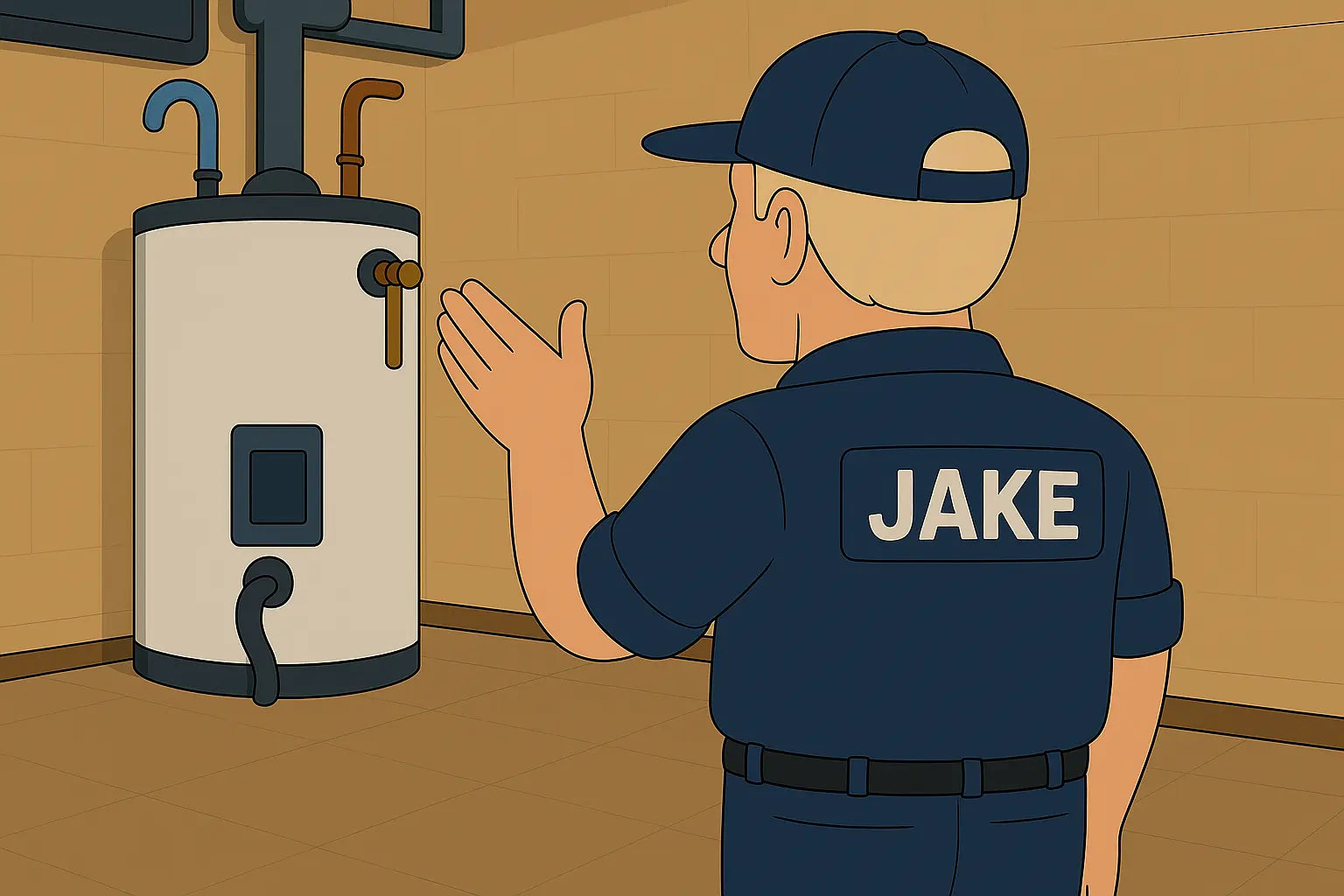Jake’s Hello 🎤
Hey there, home heroes 👋 Jake here—your not-so-average guy with a tool belt and too many opinions about water heaters. I’ve installed more 60-gallon tanks than I can count, and yep, I’ve also yanked a fair number of them out to make way for those sleek, wall-mounted tankless units. So if you're stuck asking, “Do I really need all this bulk?”—you’re in the right place.
Let’s talk hot water showdowns: old-school tanks vs. modern tankless heaters. Should you stick with that big boy in the basement, or is it time to level up to something a bit more futuristic? Let’s find out.
The Basics: Tank vs. Tankless—What’s the Real Difference?
A traditional 60-gallon electric water heater stores and reheats water around the clock. It’s reliable, but not exactly energy-savvy.
Tankless, on the other hand, heats water on-demand. No tank. No standby heat loss. It’s like the espresso machine of water heaters—no brewing, just hot water when you need it.
Want a quick primer? Check out this handy water heater guide by Energy.gov. It’s government-backed and breaks things down in plain English (which I respect).
Pros and Cons: The Good, the Bad, and the Lukewarm
Pros of a 60-Gallon Tank:
-
Lower upfront cost. You can get a basic electric unit for much less than tankless.
-
Straightforward installation. Especially if you're replacing an existing tank.
-
Great for large households. Stores plenty of hot water for back-to-back showers.
Cons of a 60-Gallon Tank:
-
Energy hog. Constantly heats water even when you don’t need it.
-
Takes up a ton of space.
-
Shorter lifespan. Usually around 10–15 years.
Pros of Going Tankless:
-
Energy-efficient. No standby heat loss.
-
Endless hot water. Great if your family showers like it’s a sport.
-
Space-saving. Mounted on the wall—hello, floor space!
-
Longer lifespan. 20+ years with proper maintenance.
Cons of Tankless:
-
Expensive upfront. Especially if you need to upgrade your home’s electric or gas capacity.
-
Flow rate limits. If you run two showers and a dishwasher, the system could struggle.
-
Harder DIY install. Tankless installs are no joke—expect to call a pro.
For a deeper dive into pros and cons, I recommend Consumer Reports’ breakdown of tank vs. tankless—super comprehensive.
The Cost Breakdown: Show Me the Money 💸
Let’s get real—most folks make this decision based on cost. So here’s how it shakes out:
60-Gallon Tank Heater
-
Unit Cost: $600–$1,200
-
Install Cost: $400–$800
-
Total: ~$1,000–$2,000
-
Lifespan: 10–15 years
Tankless Unit
-
Unit Cost: $1,000–$2,500
-
Install Cost: $800–$2,000+
-
Total: ~$2,000–$4,500
-
Lifespan: 20+ years
But here’s the kicker—Energy Star estimates that tankless heaters save households $100 or more annually on energy bills. Over time, that can make up for the higher initial cost. Don’t believe me? Check out Energy Star’s take on tankless savings for hard numbers.
Installation Realities: DIY or Call a Pro?
If you’re replacing a tank with another tank, it’s often a one-day job. But switching from a 60-gallon tank to tankless? Whole other ballgame.
You might need:
-
New venting
-
Gas line upgrades (for gas tankless)
-
Higher electrical capacity (for electric tankless)
And that means $$$.
To get a sense of what’s involved, this installation guide by This Old House is solid gold. It’s got visuals, videos, and good common sense.
Performance Check: Will You Get Enough Hot Water?
Tankless sounds great until your teen takes a 45-minute shower and someone starts a load of laundry.
Most tankless models max out at around 2–5 gallons per minute (GPM). That’s enough for:
-
One shower + one sink
-
Or one dishwasher + one washing machine
Need more simultaneous hot water? You’ll either need a bigger tankless model—or multiple units.
Pro tip: Use this handy GPM calculator from Ecomfort to estimate what size you need based on your home’s hot water usage.
Maintenance: What’s the Commitment?
Tank Heater Maintenance:
-
Flush once a year
-
Check the anode rod
-
Replace elements every few years
Tankless Maintenance:
-
Flush annually to remove scale buildup
-
Clean the inlet screen
-
Service gas lines and vents
Tankless has fewer moving parts, but requires more specific maintenance. And if you’ve got hard water? A descaling system or water softener is pretty much a must.
Environmental Impact ♻️
Let’s not forget Mother Earth. Tankless units are more eco-friendly in the long run because:
-
They use less energy
-
They last longer
-
They have replaceable components, which means less landfill waste
Want proof? Environment America’s analysis on eco-friendly water heating makes a compelling case.
Real-Life Scenarios: What’s Best for You?
Scenario 1: Family of 5 in a big house?
Stick with the 60-gallon tank or invest in a high-flow tankless.
Scenario 2: Empty nester with low water demand?
Go tankless and enjoy the energy savings.
Scenario 3: Renovating a small home or converting a basement?
Tankless wins for space-saving alone.
Scenario 4: Budget tight but the tank is dying?
A new 60-gallon tank heater is the safer financial bet… for now.
Jake’s Final Verdict 🧰
Alright, here’s the bottom line from your buddy Jake:
-
If you’ve got a tight budget, plenty of space, and multiple people using hot water at once? Stick with the 60-gallon tank.
-
If you’re all about long-term savings, live in a smaller household, and don’t mind the upfront investment? Tankless is the way to go.
And if you’re still on the fence, start by checking out some top-rated tank options. I like what’s on offer at The Furnace Outlet’s collection of 50–60 gallon electric water heaters. Great selection, clear specs, and decent prices.
Curious about if you need help installing this system? Visit my guide: Solo Install Challenge.
Until next time,
- Jake, your comfort loving tech







